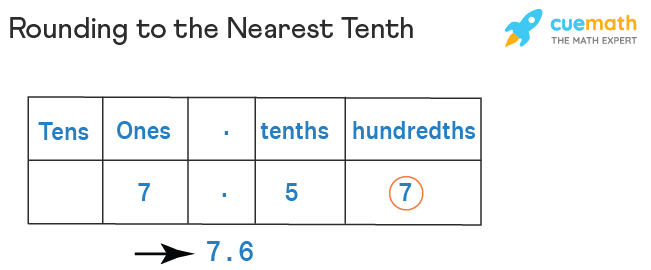Apply Now
Essential Guide to Properly Signing a Check for Secure Payments
Understanding the Importance of Check Signatures
When it comes to financial transactions, the act of signing a check is a crucial step that authorizes the payment. A signature serves as a form of validation for the amount and the payee designated on the check, making it essential to ensure it’s done correctly. Insecure or incorrect signatures may lead to rejected payments or even fraud. Understanding your institution's signature requirements for checks is vital to avoid complications down the line. Additionally, an accurate signature reflects professionalism and attention to detail in personal finance.
It's also important to note the various signature types accepted by banks, as each institution has its own policies regarding check signatures. The significance of a check signature extends beyond a mere formality; it embodies your authorization and intent to pay, ensuring that transactions proceed smoothly.
Basic Steps to Sign a Check
Signing a check may seem straightforward, but there are specific steps to ensure integrity and compliance with banking protocols. Here, we outline how to sign a check correctly:
1. **Hold the Check Properly**: Start by placing the check on a flat surface or holding it securely in your hand. Ensure the writing area is visible and accessible.
2. **Locate the Signature Line**: Identify the line at the bottom right corner of the check that reads "Signature." This is where you will place your signature.
3. **Sign with Care**: Using a pen with blue or black ink, write your signature clearly and legibly. Avoid embellishing or altering your signature from what the bank has on file.
4. **Endorsement for Deposit**: If you're endorsing the check for deposit, write "For Deposit Only" followed by your signature on the back. This restricts the check to being deposited rather than cashed.
5. **Verify Signature Legibility**: Ensure your signature reads clearly and matches the bank’s records to avoid any potential issues.
These steps collectively contribute to safeguarding your financial transactions. Proper execution not only ensures compliance with check signature rules but helps prevent fraud.
Common Check Signing Mistakes to Avoid
Even experienced individuals can make mistakes when signing checks, which can lead to complications. Here are some common pitfalls to avoid:
- **Not Matching Signatures**: One of the most prevalent errors is not matching the signature to what the bank has on file. Ensure consistency to avoid delays in transactions.
- **Signing in Pencil**: Always use permanent ink. A pencil can be easily altered, leading to disputes over the legitimacy of the check.
- **Ignoring Restrictions**: If a check has a restrictive endorsement, failing to comply can result in unauthorized transactions. Always follow endorsement rules.
- **Neglecting to Add Your Signature**: Unsigned checks are often rejected. Always double-check before handing over a check for payment.
- **Forgetting to Endorse for Deposit**: If you don’t endorse a check before depositing, it may be returned. Always include the appropriate endorsements.
By being aware of these mistakes, you can ensure that your check signing process remains smooth and secure.
Creating Secure Checks: Endorsement Types and Requirements
Types of Check Endorsements
Endorsements are crucial for making checks secure and valid. Understanding the types of endorsements will aid in the proper handling of your financial documents.
1. **Blank Endorsement**: This simple endorsement involves just your signature and allows the check to be cashed or deposited by anyone. However, it’s risky and should only be used when you're ready to process the check.
2. **Restrictive Endorsement**: This type adds an extra layer of security. By writing “For Deposit Only” along with your signature, you restrict the check to deposits, preventing unauthorized cashing.
3. **Qualified Endorsement**: Also known as a limited endorsement, using terms like “Pay to the order of [Name]” specifies to whom the check can be transferred.
Choosing the right endorsement type is essential to protect against fraud and ensure that funds reach the intended recipient.
Signature Verification Process at Banks
Banks have strict procedures for verifying signatures to prevent fraud and unauthorized transactions. Here's how the process typically works:
- **Signature Cards**: When you open a bank account, you usually complete a signature card, which serves as a reference for verification. Your signatures on checks will be compared against this card to ensure authenticity.
- **Technology Utilization**: Many financial institutions use technology to validate signatures. This includes scanning checks and electronically matching signatures against stored images.
- **Human Oversight**: Despite technological advancements, bank tellers often visually inspect signatures for discrepancies. They are trained to identify common forgery signs, ensuring additional security.
It's essential to keep your signature updated and consistent across all documents to avoid any complications during verification.
Signing a Check for Others: Special Considerations
Sometimes, you may need to sign a check on behalf of someone else or use a joint account. It’s vital to understand the nuances involved in such cases:
- **Authorization**: Obtain permission from the account holder before signing checks on their behalf. Unauthorized signatures can lead to legal repercussions.
- **Clear Indication**: When signing for someone else, clearly indicate that you are signing on their behalf. A common practice is to write “John Doe by Jane Smith” to show authorization.
- **Joint Accounts**: If you share a joint account, both parties may need to sign for substantial transactions, depending on the bank's policies. Always check bank requirements on joint accounts for smooth processing.
- **Signing with a Stamp**: Some organizations may use check-signing stamps for efficiency. Ensure that this method aligns with bank policies to prevent unauthorized use.
Understanding these procedures helps in navigating complex check signing situations, ensuring your dealings are legal and secure.
Handling Check Signing in Business and Corporate Settings
Check Signing Policies for Businesses
Establishing clear check signing policies is vital for businesses to maintain financial integrity. Here are key considerations for companies:
- **Define Authority Levels**: Clearly outline who can sign checks and for what amounts. For larger sums, it may require multiple signatures, ensuring accountability.
- **Implement Controls**: Use a secure process for issuing checks. This can involve a review process or requiring approval from a higher authority before checks are finalized.
- **Training Staff**: Provide training on check signing rules and practices. Employees involved in financial transactions should understand both the importance of signatures and how to comply with endorsement rules.
Developing robust policies safeguards your business against fraud, ensuring secure transactions and minimal risk.
Multiple Signatures and Joint Checks
In scenarios where multiple signers are required, several stipulations influence the handling of joint checks, including:
- **Signature Requirements**: Understand each signer's contribution to the endorsement process, ensuring that all necessary individuals sign the check as per agreed terms.
- **Clear Record-Keeping**: Maintain proper records of joint signers and their respective authorities to prevent disputes regarding the legitimacy of transactions.
- **Legal Implications**: Be aware of the legal obligations that come with signing checks for business dealings, ensuring that all signers are authorized to prevent errors or unauthorized actions.
Managing multiple signatures correctly is crucial for protecting the integrity of financial transactions within a business framework.
Signing Checks for Direct Deposits: Guidelines
Direct deposit options are becoming increasingly popular, and understanding the signing requirements for checks related to deposits is essential:
- **Authorization Forms**: Many institutions require specific forms to authorize direct deposits. Ensure all necessary forms are completed, signed, and submitted.
- **Verify Routing and Account Numbers**: Always double-check the routing numbers and account details when signing checks intended for direct deposits to prevent errors.
- **Synchronized Signature**: Use the same signature as on your account registration to facilitate smooth processing during the direct deposit process.
Following these guidelines streamlines the process of signing checks for direct deposits, minimizing potential errors and ensuring timely payments.
Q&A Section: Common Questions on Check Signing
What are the basic requirements for signing checks?
To sign a check properly, ensure you use a pen with ink, sign in the designated area exactly as it appears on your account, and avoid altering your signature style. Additionally, confirm your check is properly filled out and includes the necessary details for the payment.
Can I use a stamp to sign checks?
Yes, some businesses use signature stamps for efficiency in signing checks. However, ensure you adhere to your bank's policies regarding the use of stamps to prevent issues with authorization.
What should I do if I’ve made a mistake while signing a check?
If you make a mistake, do not write over it. Instead, draw a line through your incorrect signature and sign again nearby or on a new check if necessary.
Is it safe to leave checks unsigned?
Leaving checks unsigned poses a significant risk of them being altered or cashed fraudulently. Always ensure checks are properly signed before handing them out.
Who can sign a check for a business?
Typically, company officers or designated employees can sign checks. These roles should be clearly defined in the company's financial policies to prevent unauthorized transactions.




